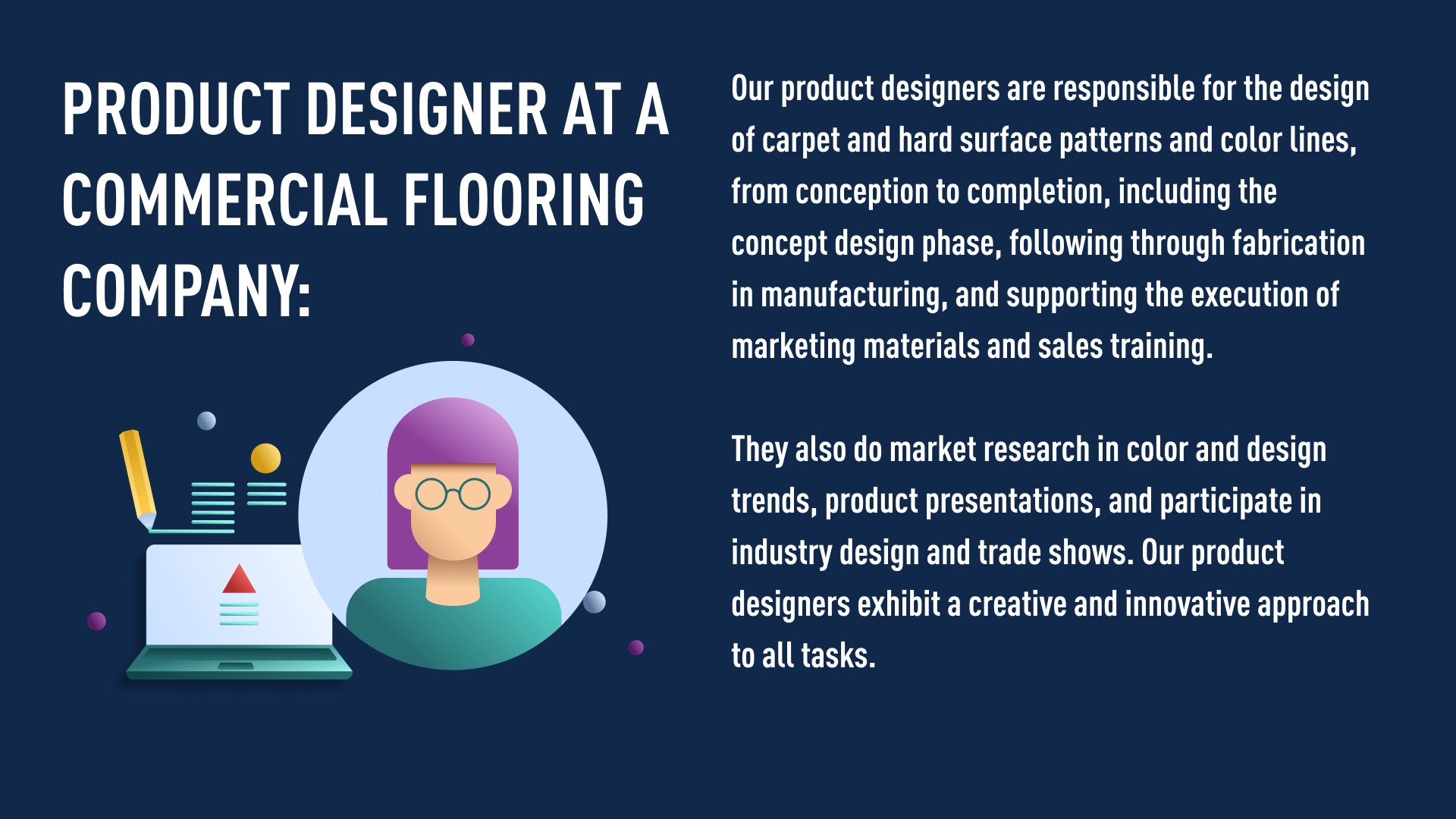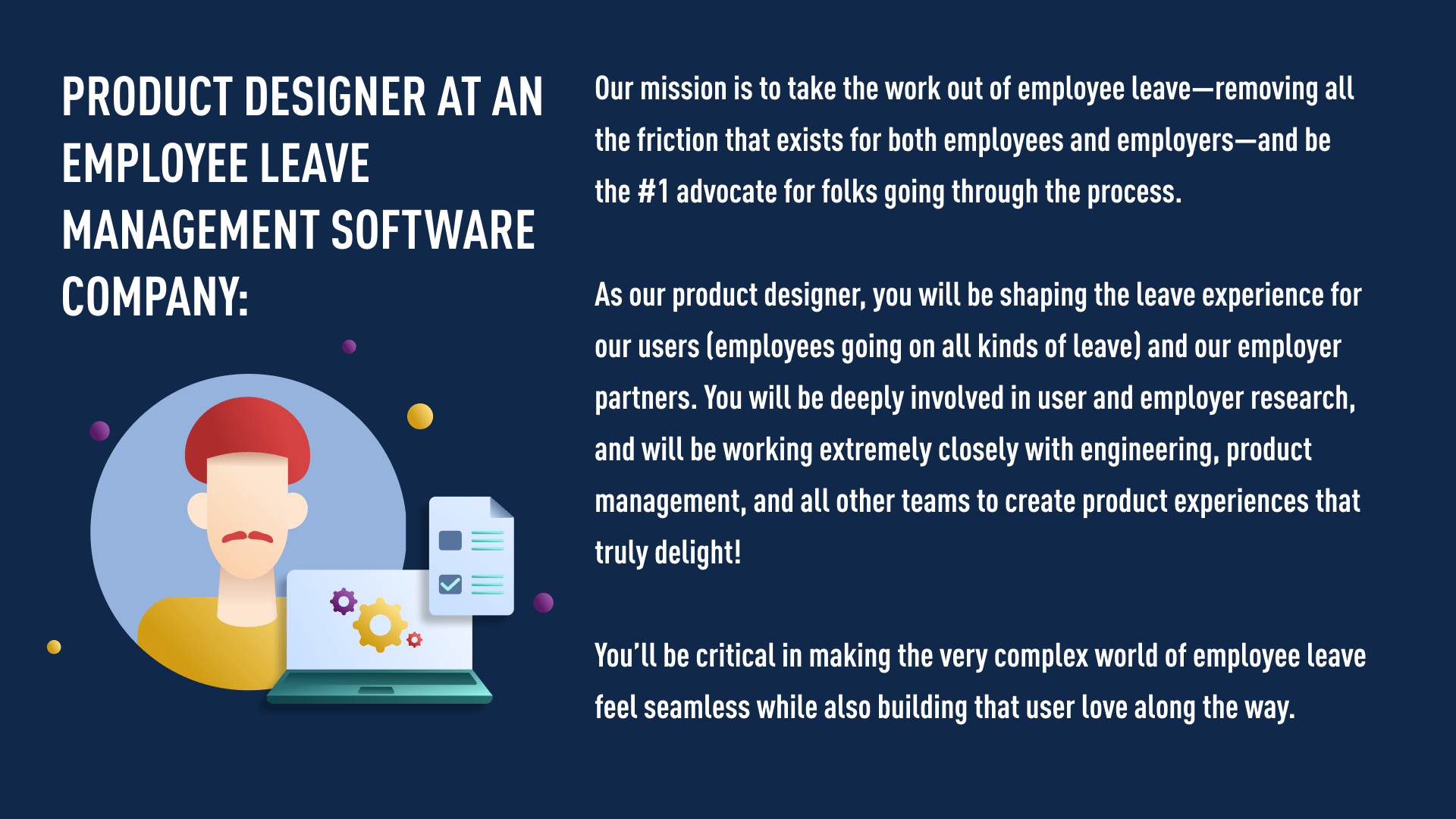Hello! Welcome back to the Product Design Short Course 😊
It’s great to see you again! In Tutorial 1, we learned what product design is and where it comes from. We also outlined the fundamental concepts and principles of product design. In this tutorial, we’ll explore what a product designer does—and the skills they need to do their job well. By the end, you’ll have a good understanding of what it’s like to work as a product designer, and what it takes to succeed in the field.
Here’s our agenda for today:
- What does a product designer do? An overview of the role
- What are the main tasks and responsibilities of a product designer?
- What are the most important skills for a product designer to have?
- Practical exercise: Skills inventory
If you’ve got questions or feedback throughout the course, feel free to reply to any of the course emails you receive. We’d love to hear from you 😊
Are you ready? Let’s begin!
1. What does a product designer do? An overview of the role
Product designers are responsible for conceiving and creating products that:
- Are able to compete in their target market
- Solve a specific user problem or address a particular need
- Tie in with business goals
Product designers must consider not only the design of the product itself—ensuring that it’s usable and user-friendly—but also where that product fits into the market and how it might help a business.
As such, the role is both strategic and tactical. Their day-to-day work spans product vision and strategy, market and user research, designing and testing, as well as documentation, design system management, and process optimization.
That’s a broad definition of what a product designer does. But, of course, the specifics of the role can vary greatly depending on where they work and on the nature of the product.
To that end, let’s compare the role description for a product designer at a commercial flooring company (a physical product) to that of a product designer at a company offering employee leave management software (a digital product). The following are based on real job ads that were online at the time of writing:


Based on those two job descriptions alone, you can already see how much room for variation there is within the product designer job title.
But, regardless of the product, industry, or company, there are some common threads that run throughout: understanding the target market, innovating and problem-solving, creating delightful user experiences, and ultimately working on successful products that help the company achieve its goals.
That’s a high-level overview of the product designer role. Now let’s consider how this breaks down into day-to-day tasks and responsibilities. Onto the next section! 👇
2. What are the main tasks and responsibilities of a product designer?
Although the role varies from company to company, most product designers follow the same broad process of:
- Research
- Ideation
- Design (wireframing and prototyping)
- Testing
- Iteration (based on user and stakeholder feedback)
- Product launch
- Ongoing product testing and iteration
We’ll explore the product design process in more detail in Tutorial 3. For now, let’s focus on the specific tasks that product designers typically take on.
Take a look at the following list of tasks and responsibilities. We’ve based it on areas that most frequently crop up in product designer job ads:
- Conduct market and competitor research and identify market trends
- Conduct qualitative and quantitative user research
- Ideate/brainstorm new product, feature, and concept ideas, coming up with innovative solutions to user problems
- Design product concepts that balance vision, craft, speed, and business potential
- Create product wireframes and prototypes
- Serve as a full-stack designer, actively participating in user research, interaction design, visual design, and experience/product ecosystem design and strategy
- Run user and usability testing to validate or invalidate design solutions
- Participate in design reviews to get stakeholder feedback
- Help define the product strategy and execute the product roadmap
- Collaborate closely with product managers to plan product experiments
- Deliver design recommendations to diverse stakeholders
- Champion the user at each stage of the discovery, design, and development process
- Educate the company on design thinking
- Create and/or manage a design system
- Contribute to the establishment of best practices, standards, and design guidelines within the team
- Foster collaboration with other designers within the team, and with other teams, to develop comprehensive and cohesive solutions
Whew! 🤩 That’s a pretty broad and varied to-do list. As you can imagine, there’s rarely a dull moment in product design. And remember, you’ll be able to put all of that into better context in Tutorial 3 where we’ll explore the product design process.
If you’d like to learn more about how a product designer would put some of these tasks into practice, check out this day-in-the-life video with CareerFoundry graduate and product designer, Florian Bölter.
3. What are the most important skills for a product designer to have?
We’ve seen just how multifaceted the product designer role can be—so it’ll come as no surprise that product designers possess a broad and varied skillset. And, as with many tech jobs, technical skills are just one half of the equation. Soft skills are equally important if you want to excel in this collaborative, cross-functional, user-centric role.
So what are the most important hard and soft skills for product designers? 🤔 Let’s take a look.
Hard skills
Working in product design involves lots of hands-on design work—such as creating wireframes and prototypes. This aspect of the role requires specific hard skills that can be learned on the job or through a practical product design course.
Among the most important hard skills for a product designer are:
- Expert knowledge of user experience (UX) design concepts and principles such as information architecture, user-centric design, and design thinking
- Proficiency in user interface (UI) design concepts and principles such as typography, color theory, interaction design, and responsive design (this applies solely to the design of digital products like websites and apps)
- Wireframing and prototyping
- Knowledge of different user research and testing methods
- Mastery of industry-standard design software and tools (which we’ll explore in Tutorial 4)
- A deep understanding of ethical, inclusive, and accessible design
You’ll notice that the list is actually quite short! That’s not to say that product design is easy, and our list is by no means exhaustive. But, as you’ll see, hard skills aren’t the be-all and end-all. The role also relies on a whole heap of soft skills—many of which you’ve probably already acquired throughout your career. Let’s see what they are 👀
Soft skills
Soft skills are the interpersonal and behavioral skills that enable you to navigate the collaborative aspects of any role. Product designers must be comfortable interacting with both end users/customers and internal stakeholders, and with managing a complex workload—so soft skills are critical at every turn.
Essential soft skills for product designers include:
- Strong collaboration and teamwork, both with fellow designers and with stakeholders from other departments
- Exceptional communication and presentation skills
- The ability to cultivate empathy (this is crucial for creating user-friendly products)
- Critical thinking; the ability to analyze design challenges and make informed decisions
- Creativity to come up with innovative solutions
- Strategic thinking and some business acumen
- Project management; the ability to handle multiple tasks and priorities at once
- Keen attention to detail
- The ability to adapt and be flexible as priorities shift
Now that’s quite a list! And I bet you can put a big green tick next to many of those skills, even without any prior experience in product design 😎
As we near the end of Tutorial 2, you’ve hopefully got a much clearer picture of what a product designer does—and the skills they need to excel in the role. So now there’s only one thing left to do…your practical task for today. Let’s go! 🚀
4. Practical exercise: Skills inventory
In this tutorial, we delved deeper into the role of a product designer. We outlined their most common tasks and responsibilities, and highlighted the most important hard and soft skills for the job.
Now we encourage you to reflect on your own skills and see how they compare. The goal is to identify your existing strengths, skills, and know-how—that is, the value you can bring to the product design field—and to pinpoint your skills gaps.
Here is your task for today:
- List out the hard/technical skills you already possess that could be relevant to a career in product design
- Compare your list of existing hard skills to our list of essential product designer hard skills (refer back to section three) and make a note of all the new skills you’d need to acquire
- Now do the same for your soft skills: list those you already possess and compare them to our list of product designer soft skills, identifying any gaps
- Search for “product designer” jobs on LinkedIn or Indeed and read through some job descriptions. Based on your own research, can you think of any additional skills or experience you have that could be valuable for product design? And/or anything else you’d need to learn?
Once you’ve completed your lists, you can call this your skills inventory. Note it down on paper or in a Google Doc so you can refer back to it later on. If you do decide to pursue a career as a product designer, you can return to your skills inventory and reflect on your progress 😍
It’s a wrap!
That brings us to the end of Tutorial 2. Excellent progress! 💃 We hope you’ve enjoyed learning all about what a product designer does and the skills that are crucial for the role. Don’t forget to take the interactive quiz before you go! 👋
